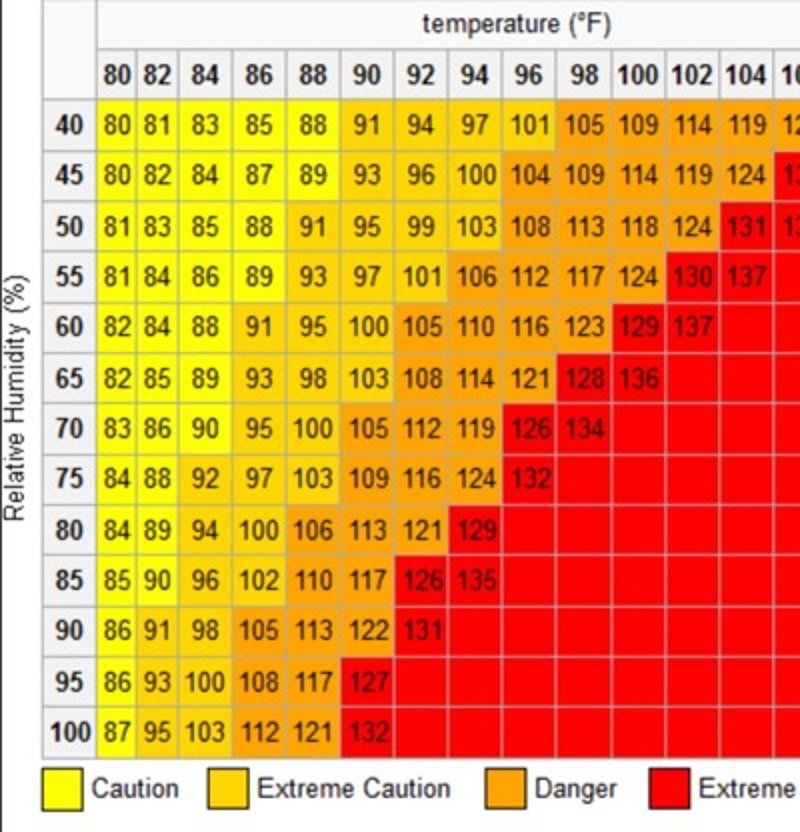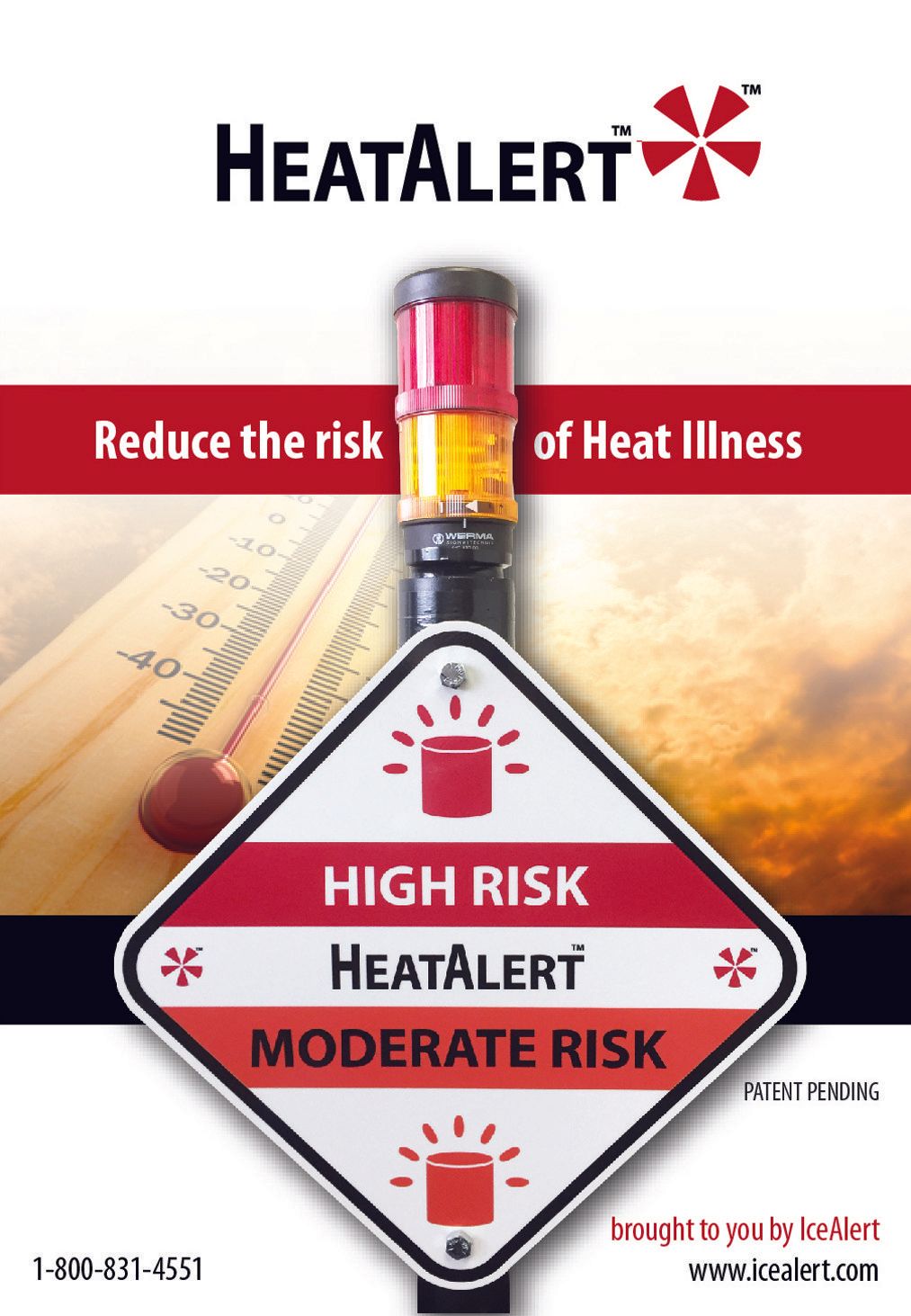Temperatures Don’t Need to be 100+ to be Dangerous!

The Heat Index is the measurement OSHA uses to determine when a workplace has reached a moderate to high risk level. As you can see in the chart below, it doesn’t have to be that hot to be dangerous. Even at moderate temperatures people can experience heat stress, heat exhaustion, and other heat illnesses and these illnesses can be serious, even deadly. Heat illness often sneaking up on unsuspecting people, and the first indication that a person is suffering from heat illness may already be a full-blown medical emergency. Fatigue, nausea, dizziness, confusion, weakness, rapid heart rate, unconsciousness, organ failure, and death can all be caused by heat illness.
But when does a workplace become dangerous?
OSHA requires employers to implement mitigating procedures when the temperature reaches 80 degrees, regardless of the humidity. Just 80 degrees! Most places in the US have summertime temperatures at or above 80 degrees, and many regions of the country far exceed that temperature for many months every year. OHSA’s recommended procedures at 80 degrees are to provide access to abundant water, and access to cooler environments which could be natural shade, or artificial shade created by tents, misting stations, or even the shade from a fixed structure. These cooling environments must be in close proximity to the work zone and employees must be given ample opportunities to seek shelter and fluids.
At 90 degrees, as shown in the chart above, regardless of the relative humidity, the Heat Index rises to the Extreme Caution level, and at that point OSHA requires that employees be given 10 minutes of rest, in a cooler environment, every 2 hours. They should also be monitored by their supervisor for signs of heat stress.
Add a few more degrees, or a bit more humidity and the Heat Index can soar to 110 to 137 degrees. You don’t have to be a rocket scientist to know that working in those conditions is going to be dangerous. In these more extreme conditions OSHA requires employers to take active steps to protect their employees. Employers should monitor workers, communicate with them, observe their demeanor and affect, provide fresh cool water, encourage elevated water consumption, provide extra rest periods, and sheltered places for employees to get into a cooler environment. These dangerous heat conditions may occur in outdoor and indoor work environments, and both should be monitored.
The biggest problem is not knowing
The biggest problem, however, is that most workers don’t know what the Heat Index is in their work environment. It is, after all, a mathematical computation of both the air temperature and relative humidity, and employees are not equipped to measure and calculate the Index. Frankly, many employers are not even equipped to accurately measure the Index. Remember adding just a few degrees of temperature or a few percentage points of humidity can have a dramatic and dangerous impact on the Heat Index, so both the temperature and humidity must be closely monitored.
Some employers use entry level personnel to roam through all the work zones, measuring these two variables, computing the Index, and recording the results, but that doesn’t provide meaningful feedback to the employees. Frankly, that methodology is costly, inefficient, inaccurate, and plagued with potential errors: errors in measurement, errors in calculation, errors in recording, errors in reporting and errors in properly communicating the dangers of heat stress, in a timely manner with the employees.
BETTER ALTERNATIVE
There is a better way. HeatAlert™ Monitoring Stations measure both the temperature and humidity and calculate the Heat Index continually. When the index reaches a moderate risk level an amber strobe light alerts all employees of the danger. If the Heat Index reaches a high-risk level the light changes to red. There is no error in measurement, calculation, recording, reporting, or in communicating the danger to the employees. The entire workforce is simultaneously alerted to the dangerous conditions, so they can implement the company’s heat policy. Additionally, an email message is sent to the supervisor informing them that the Heat Index has reached a moderate or high risk, so they can confirm that heat illness mitigation procedures are being observed.
The secret to keeping a workforce safe from dangerous heat illness is knowing when dangers exist. HeatAlert™ Monitoring Stations provide an accurate and timely warning system. Learn more about installing HeatAlert™ Monitoring Stations in your work environments to protect your human resources from heat illness.
IceAlert, Inc.
20460 SW Avery Ct.
Suite B
Tualatin, OR 97062
Phone 503-692-6656
Toll Free 1-800-831-4551
Fax 503-692-6657
Email
info@icealert.com



